chrysanthemum poisonous cats
Wondering what plants are poisonous to cats? Or those that are safe? Find out more about toxic and safe plants and flowers in our expert guide.
Cats and poisonous flowers and plants
The most dangerous plant is the lily - all parts are toxic. However, there are other plants and flowers, both indoors and outdoors, that can be harmful to cats.
Will cats eat poisonous plants?
Most cats are very wary of eating anything unusual, which means plant poisoning cases taken to the vets are rare. When a cat does become unwell, it is usually because something has brushed on their fur or paws, which they have then ingested while grooming.
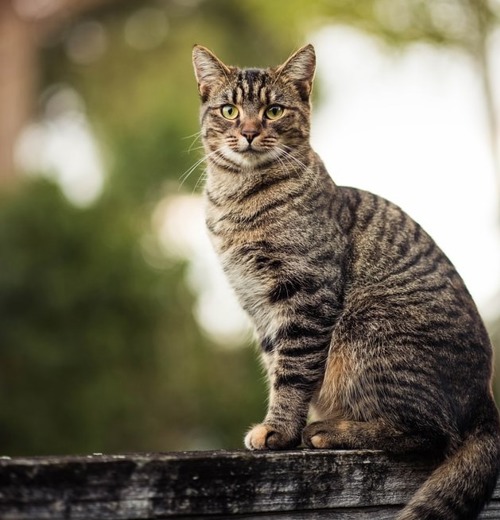
Quick reference advice about plants, flowers and poisoning
If you're unsure whether a plant or flower is poisonous to your cat, if you're keen to find plants and flowers safe for cats, or if you suspect your cat may have been poisoned, we have guidance and vet-approved lists to help you.
To keep your cat safe, we recommend avoiding toxic plants and flowers altogether. Any plants or flowers marked as caution-advised should be kept out of reach, particularly if your cat is a nibbler.
- Cats and cut flowers
- Cats and indoor plants
- Outdoor plants dangerous to cats
- Outdoor plants safe for cats
- I think my cat has been poisoned
Keeping your cat safe from dangerous plants and flowers indoors
There is greater risk within the home as it is a confined area and a bored or curious cat might investigate an indoor plant or a cut flower display by nibbling.
To keep your cat safe indoors:
- Familiarise yourself with house plants poisonous to cats and avoid having these in your home altogether
- Be wary of advisory plants and either avoid these or keep them well out of reach of your pet, especially if your cat is a nibbler
- If you enjoy having fresh bouquets or floral displays in your home, purchase cat-friendly flowers
- Provide cat grass for your cat to nibble instead
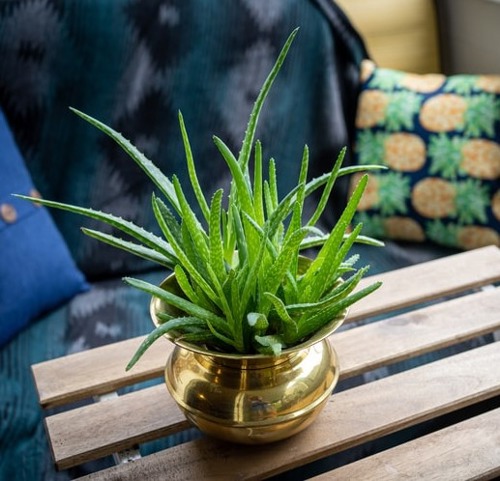
Aloe vera
Houseplants poisonous to cats
Care should be taken when purchasing house plants, as varieties such as cycads, cheese plants and aloe vera are not cat-friendly. Seasonal plants like mistletoe and poinsettia are also dangerous.
If you're not sure where to start in finding houseplants safe for cats, there are lots of online retailers offering feline-friendly options, meaning you can still enjoy gorgeous greenery without your cat coming to any harm.
Not sure if an indoor plant is toxic to cats, caution-advised, or safe to keep at home? Check for specific varieties in our vet-approved guidance.
Cats and indoor plants list
Which flowers are toxic to cats?
Various flower varieties are hazardous to your cat. Common blooms like peonies, daffodils and tulips can be harmful if they eat them, and lilies should always be avoided.
How to make a cat-safe bouquet
If you're looking to put together a bunch of flowers for your home, or for someone you love, you might be wondering which flowers are cat-safe. Thankfully, there are lots beautiful, pet-friendly petals you can use, including freesias, roses and snapdragons.
Cats and cut flowers list
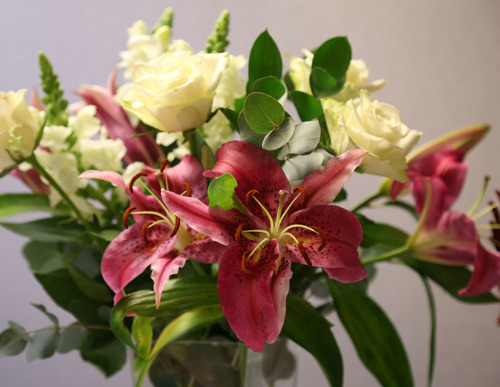
Why are lilies dangerous to cats?
Lilies are particularly toxic to cats. Although you might find that your cat is disinterested in eating them, there is always a risk that they may come into contact with the flower's pollen by rubbing up against it and absent-mindedly licking their fur.
Unfortunately there are several types of lilies that are poisonous to cats, including Easter Lily, Tiger Lily and other members of the lily family.
All parts of the lily plant are toxic to cats if ingested, and consuming small amounts can result in severe poisoning. The best way to prevent your cat from being poisoned is simply to not have lilies in your home or garden.
If you suspect your cat may have ingested any part of the lily plant, please seek advice from your vet immediately.
Are daffodils poisonous to cats?
While daffodils are a beautiful sign of spring, they are unfortunately dangerous for our feline friends. Daffodil bulbs contain crystals that are extremely toxic to cats if eaten.
The heads and leaves can also make your cat unwell if consumed. Daffodils contain a poisonous substance called lycorine. If digested, this can cause stomach upset, vomiting or wider serious illness.
If you suspect your cat has ingested any part of a daffodil, please seek advice from your vet immediately.
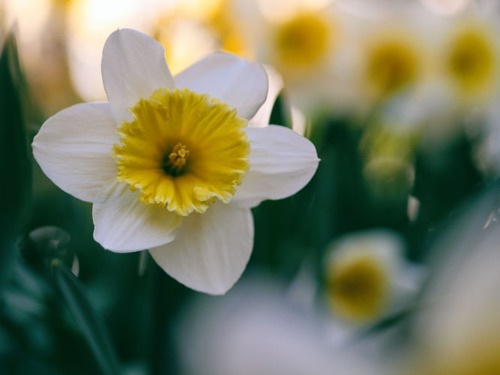
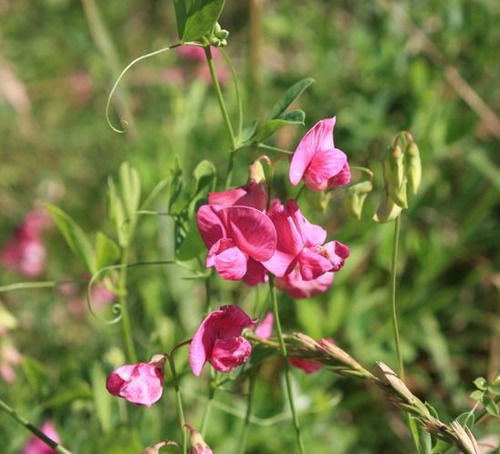
Keeping your cat safe in the garden
It's harder to protect your cats outdoors as they will have a greater territory than just your garden. However, thankfully, as cats are discriminate eaters, they are unlikely to try eating anything unfamiliar and will most likely spend their time nibbling on safe grass or watching everything else going on out there.
To help keep your cat safe outdoors:
- Familiarise yourself with outdoor plants poisonous to cats and avoid having these in your garden altogether
- Promptly clear up any prunings
- Keep bulbs such as tulips and daffodils out of reach
- Read our advice on creating a cat-friendly garden
Outdoor plants dangerous to cats
Plants safe for cats
Looking for plants that are safe for cats? We've compiled a list of non-toxic flowers and plants. Some can even help enhance your outdoor environment, encouraging your cat to stay in your garden.Check our full list of safe outdoor plants for cats here.
- Buddleia – common garden shrub/small tree with spikes of flowers throughout the summer – white through to mauves and purples. Excellent for butterflies so cats like it too!
- Hibiscus – various varieties as both garden and some less hardy conservatory plants/small shrubs
- Hollyhock – old cottage garden favourite, many colours and generally grown as an annual/biennial. Good long lasting summer flowering season
- Gerbera daisy – daisy-like flowers often sold as a pot plant for indoors, but also can survive outdoors in warmer regions
- Nasturtium – good old garden favourite, annual grown from seed. It is edible by humans too and a good range of colours
- Nemesia – annual bedding plant with a fantastic array of flowers
- Pansies – 'standard' fare in pots, baskets and containers
- Petunia – common garden favourite. Grown usually as an annual for containers, baskets etc. Huge range of colours and styles
- Roses – huge range available now. Perennial shrubs, climbers and ramblers. Single flower varieties good for insects, many scented
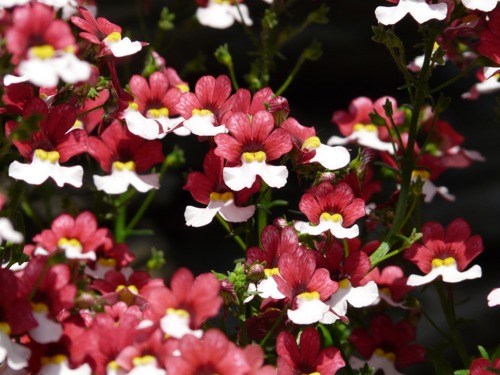
- Sunflower – popular with kids as some will grow huge in a few weeks and then huge yellow/orange/red blooms which once seed is set, provide good source of food for garden birds
- Valerian – produces a similar effect to that of catmint, commonly available in garden centres. Produces pretty flowers which are popular with insects
- Zinnia – old favourite with plenty of colours. Easy from seed and bee-friendly
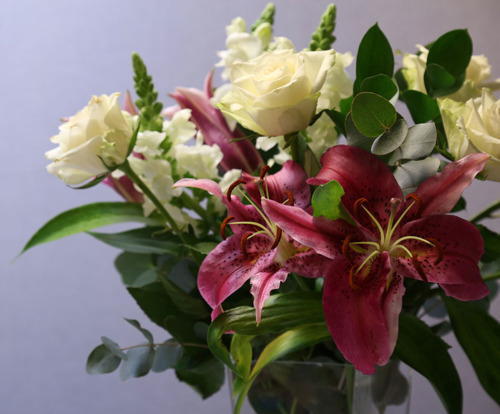
What are the signs of plant poisoning in my cat?
If you think your cat has been poisoned, contact your vet immediately. Don't wait for signs of illness to develop.
Signs of poisoning can include (but are not limited to)
- salivation
- vomiting
- diarrhoea
- twitching
- fitting
- breathing difficulties
- shock
- collapse
- coma
First aid for poisoned cats
As well as hazardous plants and flowers, there are items around the house that can cause poisoning in cats. If you can see the poisonous substance, take your cat away from it and call your vet for advice. They may want to see your cat immediately. Making your cat sick may not be helpful.
If you have evidence of what your cat has eaten, take a sample to the vet. Even a sample of vomit may help diagnosis, particularly if it is an unusual colour or contains plant matter.
Most importantly, don't panic. Seek advice from your vet immediately and they'll be able to help.
Find out more about your cat and poisoning
chrysanthemum poisonous cats
Source: https://www.cats.org.uk/help-and-advice/home-and-environment/dangerous-plants
Posted by: arledgeetonly.blogspot.com

0 Response to "chrysanthemum poisonous cats"
Post a Comment